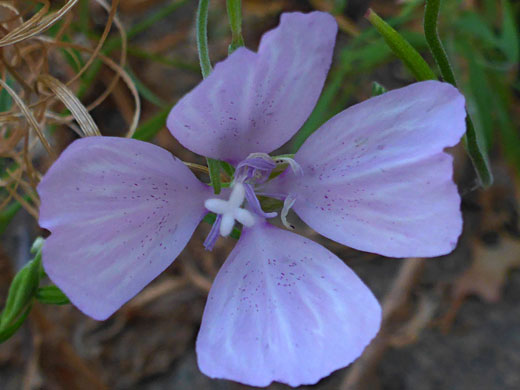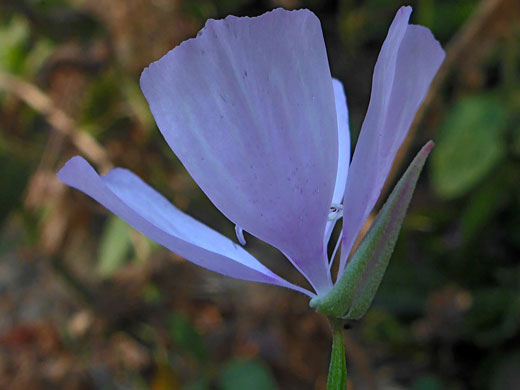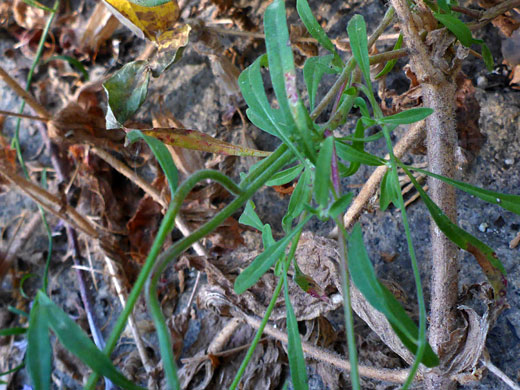Common name:
Dudley's clarkia
Family:
Scientific name:
Clarkia dudleyana
Main flower color:
Range:
California; the Sierra Nevada foothills, and ranges to the south
Height:
Up to 25 inches
Habitat:
Chaparral, open woodland; up to 5,000 feet
Leaves:
Narrowly oblanceolate to lanceolate, up to 3 inches long, glabrous
Season:
May to September
The four sepals of clarkia dudleyana flowers remain fused, and angled upwards, just below one of the four petals. Sepals are green or pinkish-red. Petals are pink to lavender, streaked with faint white lines and flecked with tiny red-purple dots. Petals, generally non-overlapping, are strongly clawed; very narrow at the base, abruptly wider above. Petals are up to 1.3 inches in length. Flowers are erect, the buds pendent. At the center are eight stamens, four bearing smaller (and paler) anthers than the others, and a four-lobed stigma, projecting beyond the anthers.
Stems are finely hairy, the leaves generally hairless. The narrow leaves, generally oblanceolate in shape, are attached by short stalks, less than half an inch.
Stems are finely hairy, the leaves generally hairless. The narrow leaves, generally oblanceolate in shape, are attached by short stalks, less than half an inch.
All Contents © Copyright The American Southwest | Comments and Questions | Contribute | Site Map



